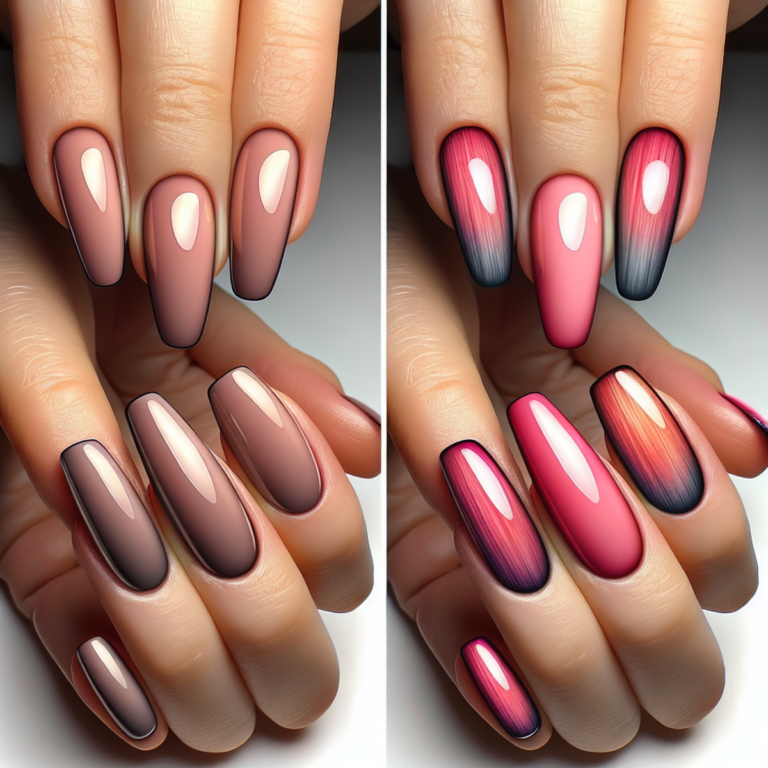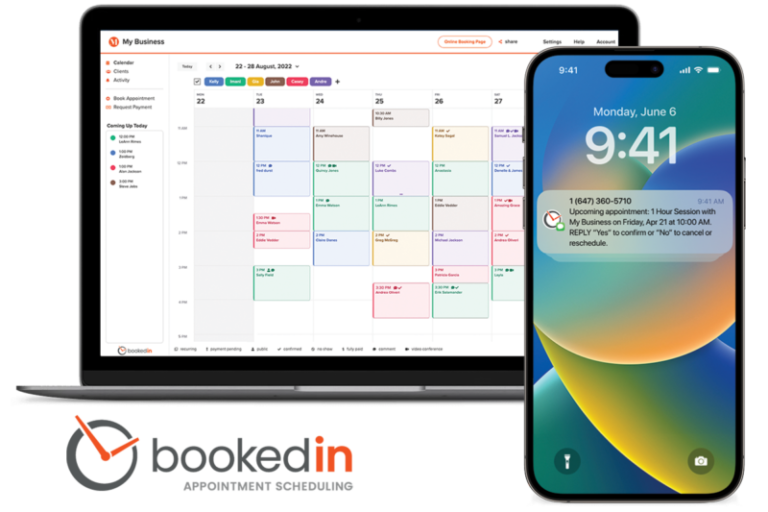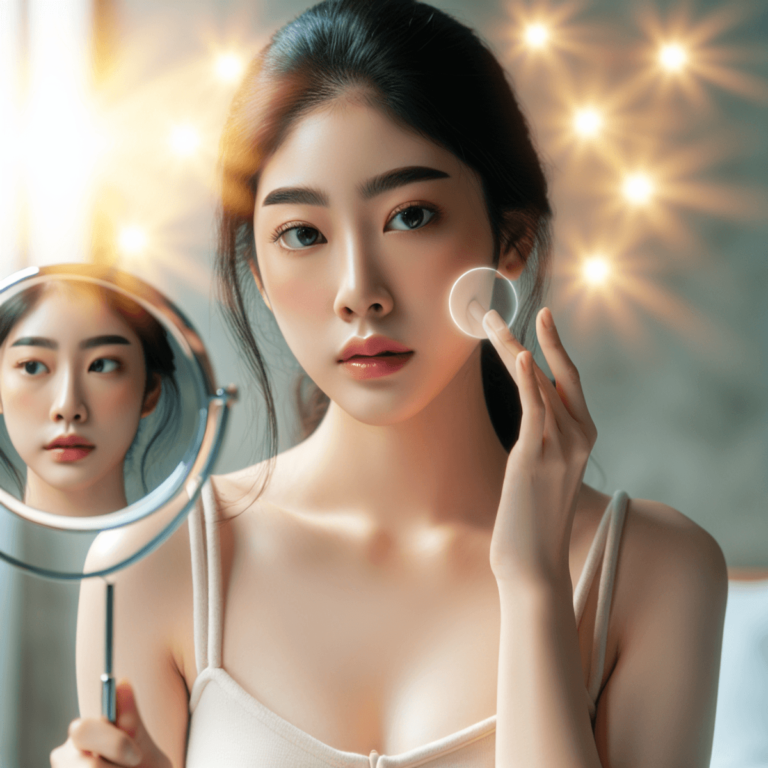How to treat different types of acne

Introduction
Acne is a common skin condition that affects millions of people worldwide. It can appear in different forms, from small pimples to serious skin problems, and can greatly affect a person’s self-confidence and overall well-being. Knowing the various types of acne is essential for proper treatment. Each type needs a specific method to control and reduce symptoms.
Why is this important?
- Not all acne is the same. Different types require different treatments.
- Misidentifying your acne type can lead to ineffective treatment, prolonging discomfort and potential scarring.
In this article, you will learn:
- How to treat different types of acne
- Effective acne treatment strategies tailored to each type
- Practical tips for preventing future breakouts
By the end of this guide, you’ll have a comprehensive understanding of how to get rid of breakouts and maintain clear skin.
Understanding Acne
What is Acne and What Causes It?
Acne is a common skin problem that shows up as pimples, blackheads, whiteheads, and sometimes more serious bumps like cysts. It mostly appears on the face, back, and shoulders where there are lots of oil glands. Knowing what causes acne can help you deal with it better:
- Hormonal Changes: Changes in hormones during puberty, periods, pregnancy, or conditions like polycystic ovary syndrome (PCOS) can make the skin produce more oil.
- Diet: Some research suggests that eating a lot of sugary foods and dairy products might make acne worse. Foods that quickly raise blood sugar levels could also increase oil production.
- Genetics: If your parents had acne, there’s a higher chance you might get it too. Genes can affect how your skin reacts to different things.
How Acne Affects Your Mind and Social Life
Having acne can impact more than just how you look. It can also affect your mental health and how you interact with others:
- Self-Esteem Issues: Constant acne can make you feel embarrassed or self-conscious. You might start avoiding social events or feeling nervous about how you look.
- Social Interaction: Sometimes, people with acne get teased or bullied, especially teenagers. This negative treatment can make it hard for you to make friends or join group activities confidently.
To deal with both the physical and emotional sides of acne, it’s important to have a plan that includes skincare routines and changes in lifestyle.
In the next section, we’ll dive into the various types of acne and their specific treatments so you can create a personalized skincare plan.
Types of Acne and Their Treatments
1. Non-Inflammatory Acne (Blackheads and Whiteheads)
Non-inflammatory acne mainly includes blackheads and whiteheads. These types of acne are less severe compared to inflammatory or severe acne but can still be bothersome.
Description and Causes:
Blackheads are open comedones where the pore is partially blocked by a combination of sebum (oil), dead skin cells, and bacteria. The exposure to air causes the blockage to oxidize, resulting in a dark color.
Whiteheads, known as closed comedones, occur when the pore is completely blocked. This prevents the contents from being exposed to air, leading to a small white or flesh-colored bump.
Key contributors to non-inflammatory acne include:
- Excessive oil production: Overactive sebaceous glands can lead to more oil on the skin’s surface.
- Clogged hair follicles: Dead skin cells that don’t shed properly mix with oil and clog pores.
- Hormonal changes: Particularly during puberty, menstruation, or pregnancy, hormone fluctuations can increase oil production.
- Diet: High glycemic foods and dairy products may exacerbate non-inflammatory acne for some individuals.
- Genetics: Your genetic makeup can influence your susceptibility to developing non-inflammatory acne.
Recommended Treatments:
To effectively manage blackheads and whiteheads, consider incorporating the following into your skincare routine:
- Salicylic Acid-Based Products:
- Salicylic acid is a beta hydroxy acid (BHA) that penetrates oily skin and dissolves debris within pores. It’s effective at exfoliating the skin and preventing clogged pores.
- Example: Use a salicylic acid cleanser or toner daily. Brands like Paula’s Choice offer well-reviewed salicylic acid products designed for this purpose.
- Benzoyl Peroxide:
- Though more commonly used for inflammatory acne, benzoyl peroxide can help reduce bacteria on the skin that can contribute to clogged pores.
- Example: Spot treatments containing 2.5% benzoyl peroxide can be applied directly to affected areas.
- Retinoids:
- Topical retinoids help increase cell turnover, preventing dead skin cells from clogging pores.
- Example: Over-the-counter options like Differin Gel (adapalene) are popular choices.
- Non-Comedogenic Moisturizers:
- Keeping your skin hydrated without clogging pores is crucial.
- Example: Look for labels indicating the product is non-comedogenic or oil-free.
- Regular Exfoliation:
- Gentle exfoliation helps remove dead skin cells, reducing the likelihood of clogged pores.
- Example: Use a mild exfoliating scrub or an AHA/BHA exfoliant once or twice a week.
- Clay Masks:
- Clay masks can absorb excess oil from the skin’s surface and help clean out pores.
- Example: Use a clay mask containing ingredients like kaolin or bentonite clay once a week.
By understanding the nature of non-inflammatory acne and implementing targeted treatments such as salicylic acid-based products, you can manage blackheads and whiteheads effectively.
2. Inflammatory Acne (Papules and Pustules)
Inflammatory acne shows up as red, swollen bumps on the skin known as papules and pustules. These types of acne are often more painful than non-inflammatory acne and can cause long-term skin damage if not treated properly.
Types of Inflammatory Lesions:
- Papules: Small, red bumps that feel tender to the touch. They occur when hair follicles become clogged with dead skin cells and oil, leading to inflammation.
- Pustules: Similar to papules but with a white or yellow center filled with pus. This indicates an infection within the clogged follicle.
Effective Treatments:
- Benzoyl Peroxide: Widely recommended for its antibacterial properties, benzoyl peroxide helps reduce inflammation and kill acne-causing bacteria. Available in various strengths, it can be found in cleansers, gels, and creams. More information on benzoyl peroxide can be found here.
- Topical Retinoids: Derived from vitamin A, topical retinoids help unclog pores and promote cell turnover, preventing the formation of new papules and pustules. They also possess anti-inflammatory properties that reduce swelling.
- Oral Antibiotics: In cases where topical treatments are insufficient, oral antibiotics may be prescribed to target deeper bacterial infections and reduce systemic inflammation. For a detailed understanding of antibiotics for acne, this resource is helpful.
- Combination Therapy: Often, a dermatologist might recommend combining benzoyl peroxide with topical retinoids or antibiotics for a more comprehensive approach.
Understanding what causes inflammatory acne and using the right treatments like benzoyl peroxide and topical retinoids can make a big difference in improving your skin’s condition. By targeting both the bacteria causing the acne and the inflammation it creates, these treatments work together to effectively manage papules and pustules.
3. Severe Acne (Nodulocystic)
Severe acne, also known as nodulocystic acne, is characterized by the presence of large, painful nodules and cysts beneath the skin’s surface. Unlike non-inflammatory acne, such as blackheads and whiteheads, nodulocystic acne involves deeper inflammation and can lead to significant skin damage.
Definition and Symptoms of Severe Nodulocystic Acne
- Nodules: These are hard, painful lumps that form deep within the skin. They do not contain pus and are often resistant to typical over-the-counter treatments.
- Cysts: Soft, pus-filled lesions that lie deeper in the skin compared to pustules. They can be particularly painful and may last for weeks or even months.
Nodulocystic acne is often accompanied by severe redness and swelling. It primarily affects the face but can also appear on other areas like the back, chest, and shoulders.
Risks Associated with Untreated Severe Cases
Untreated nodulocystic acne poses several risks:
- Scarring: Deep-seated lesions are more likely to result in permanent scars.
- Pigmentation Issues: Post-inflammatory hyperpigmentation (PIH) can cause dark spots that linger even after the acne has healed.
- Psychological Impact: Persistent severe acne can affect self-esteem and may lead to anxiety or depression.
Treatment Options
Effective treatment for severe nodulocystic acne typically requires professional medical intervention. Here are some common options:
- Isotretinoin: Often referred to by its brand name Accutane, isotretinoin is a powerful oral medication that targets all causes of acne. It reduces oil production, decreases inflammation, and helps unclog pores. Due to its potency, it’s usually prescribed for severe cases where other treatments have failed.
- Steroid Injections: For immediate relief from large cysts, dermatologists may administer corticosteroid injections directly into the affected area. This can rapidly reduce swelling and pain.
- Antibiotics: Both topical and oral antibiotics may be used to combat bacterial infection and reduce inflammation.
- Topical Retinoids: These vitamin A derivatives help unclog pores and prevent new breakouts. They are often used in combination with other treatments for maximum efficacy.
In some cases, dermatologists might recommend a combination approach involving multiple types of treatments tailored specifically to your skin’s needs.
Understanding the severity of your acne helps in choosing the right treatment strategy. While mild forms like blackheads respond well to non-inflammatory acne treatments such as salicylic acid-based products, severe nodulocystic acne requires more aggressive measures like isotretinoin or steroid injections.
Tailored Treatment Approaches Based on Severity Level
1. Mild Cases (Blackheads & Whiteheads) Management Strategies
Mild acne, characterized by blackheads and whiteheads, often responds well to over-the-counter (OTC) treatments and a consistent skincare routine. Establishing daily habits is crucial for managing and preventing mild acne effectively.
Importance of a Consistent Skincare Routine:
A regular skincare regimen helps maintain skin health and prevent clogged pores, which are the primary cause of non-inflammatory acne. Key components of an effective routine include:
- Cleansing: Use a gentle cleanser twice daily to remove excess oil, dirt, and makeup.
- Exfoliating: Incorporate a chemical exfoliant containing salicylic acid or glycolic acid 2-3 times a week to help unclog pores.
- Moisturizing: Choose a non-comedogenic moisturizer to keep the skin hydrated without exacerbating acne.
- Sun Protection: Apply broad-spectrum sunscreen daily to protect against UV damage, which can worsen acne.
Recommended OTC Products:
Several OTC products are effective for treating blackheads and whiteheads. Look for ingredients known for their acne-fighting properties:
- Salicylic Acid: This beta hydroxy acid (BHA) penetrates deep into the pores, helping to dissolve excess oil and dead skin cells. Products like Neutrogena Oil-Free Acne Wash or Paula’s Choice Skin Perfecting 2% BHA Liquid Exfoliant are popular choices.
- Benzoyl Peroxide: Though more commonly used for inflammatory acne, low concentrations (2.5%-5%) can help reduce bacteria that contribute to clogged pores. Consider products such as Clean & Clear Persa-Gel 10.
- Alpha Hydroxy Acids (AHAs): Glycolic acid and lactic acid help exfoliate the skin’s surface, promoting cell turnover and preventing pore blockage. Try The Ordinary Glycolic Acid 7% Toning Solution.
Additional Tips:
- Avoid Over-Washing: Washing your face too frequently can strip the skin of its natural oils, leading to increased oil production and potential breakouts.
- Non-Comedogenic Products: Ensure all skincare and makeup products are labeled “non-comedogenic” to avoid further clogging pores.
- Spot Treatments: Use targeted treatments like salicylic acid spot gels on persistent blackheads or whiteheads.
It’s also important to note that skincare advice differs based on age groups. For instance, tween acne skincare advice emphasizes different aspects compared to adult skincare routines.
Adhering to these mild acne management strategies can significantly improve your skin’s condition over time. Consistency is key; visible results may take several weeks but maintaining these habits will help keep mild acne at bay.
2. Moderate Cases (Papules & Pustules) Management Strategies
Moderate acne, characterized by the presence of papules and pustules, requires a more targeted approach than mild acne management strategies. Understanding how to treat different types of acne is crucial, especially for moderate cases where inflammation plays a significant role.
Role of Topical Retinoids
Topical retinoids are highly effective in reducing inflammation associated with moderate acne. These compounds, derived from Vitamin A, help to unclog pores and prevent the formation of new lesions. Commonly prescribed retinoids include tretinoin, adapalene, and tazarotene. By promoting cell turnover, these medications not only reduce existing inflammation but also help to prevent future breakouts. Research indicates that topical retinoids can significantly improve moderate to severe acne, making them a go-to treatment option.
Consulting a Dermatologist
If over-the-counter treatments are not yielding satisfactory results, it might be time to consult a dermatologist. Professional evaluation ensures a personalized treatment plan that may include oral medication options. Oral antibiotics like doxycycline or minocycline can effectively target the bacteria responsible for acne, reducing both inflammation and lesion count.
- Oral Antibiotics: Typically prescribed for short-term use to minimize resistance, oral antibiotics can be particularly beneficial in managing widespread inflammatory acne.
- Hormonal Treatments: For some individuals, hormonal imbalances contribute significantly to acne flare-ups. In such cases, dermatologists may prescribe oral contraceptives or spironolactone, which work by regulating hormone levels and reducing oil production.
Combination Therapy
Often, combining topical retinoids with other treatments like benzoyl peroxide or salicylic acid can enhance effectiveness. This multi-faceted approach tackles different aspects of acne pathogenesis simultaneously.
By focusing on inflammation reduction through topical retinoids and consulting dermatologists for potential oral medication options, you can effectively manage moderate acne. Personalized approaches tailored to your skin’s specific needs ensure better outcomes and pave the way for clearer skin.
3. Managing Severe Nodulocystic Acne
Severe nodulocystic acne is a tough condition to deal with. It involves painful, deep lumps that can leave permanent scars. It’s crucial to seek professional help as soon as possible for these severe cases.
Why You Need Professional Help
The complexity of severe nodulocystic acne means you need to see a dermatologist. Trying to treat it yourself usually doesn’t work and might even make things worse.
Prescription Treatments Available
Dermatologists have several effective treatments at their disposal:
- Isotretinoin: This powerful oral medication is well-known for its ability to treat severe acne by shrinking oil glands and regulating skin cell turnover.
- Steroid Injections: These are injected directly into large cysts to reduce inflammation and speed up healing.
- Oral Antibiotics: These help control bacterial growth and reduce inflammation.
- Hormonal Treatments: If your acne is linked to hormonal imbalances, options like oral contraceptives or anti-androgen agents such as spironolactone may be suitable.
Understanding Each Treatment Option
- Isotretinoin: Usually reserved for the most severe cases, this medication requires close medical supervision due to potential side effects like dry skin, joint pain, and more serious risks such as liver damage.
- Steroid Injections: These provide quick relief from painful cysts but are typically used sparingly to avoid thinning of the skin.
- Oral Antibiotics: Common choices include doxycycline and minocycline, which help reduce bacterial load and inflammation but may need long-term use.
- Hormonal Treatments: Particularly effective for women experiencing severe acne due to hormonal fluctuations; these treatments address the root cause rather than just the symptoms.
The Importance of a Comprehensive Approach
Combining these treatments with appropriate skincare routines designed by professionals ensures a holistic approach. Regular follow-ups with your dermatologist are essential to monitor progress and adjust treatment plans as needed.
Effectively managing severe nodulocystic acne involves using specialized knowledge from dermatologists who have advanced tools and medications tailored for each individual.
Quick Relief Techniques for Pimples That Need Immediate Attention!
When a pimple pops up at the worst possible time, you need fast pimple relief methods. Here are some effective home remedies to help you get rid of pimples quickly:
Ice Application
Applying ice is a simple yet effective way to reduce inflammation and redness associated with pimples. Here’s how to do it:
- Wrap an ice cube in a clean cloth – Direct contact with ice can damage your skin, so always use a barrier.
- Apply the wrapped ice to the pimple – Hold it against the affected area for about 1-2 minutes.
- Repeat every few hours – This helps to reduce swelling and redness over time.
Tea Tree Oil
Tea tree oil is known for its antimicrobial properties, making it an excellent option for how to treat pimples:
- Dilute tea tree oil – Mix one part tea tree oil with nine parts water to avoid skin irritation.
- Apply with a cotton swab – Dab the diluted solution directly onto the pimple.
- Leave it on overnight – Let it work its magic while you sleep.
Over-the-Counter Spot Treatments
Products containing benzoyl peroxide or salicylic acid can offer quick relief:
- Benzoyl Peroxide: Kills bacteria and dries out excess oil.
- Salicylic Acid: Helps unclog pores and reduces swelling.
Honey and Cinnamon Mask
Honey has antibacterial properties, and cinnamon can help reduce inflammation:
- Mix 1 teaspoon of cinnamon with 2 tablespoons of honey.
- Apply the mixture directly to the pimple.
- Leave it on for 10-15 minutes before rinsing off.
Aspirin Paste
Aspirin contains salicylic acid, which can help reduce inflammation:
- Crush an aspirin tablet into a fine powder.
- Mix with a small amount of water to create a paste.
- Apply directly to the pimple and leave it on for 10-15 minutes before rinsing off.
Regularly incorporating these techniques can provide quick relief from unexpected breakouts, making it easier to manage how to get rid of pimples fast and effectively.
Proactive Measures To Minimize Future Breakouts!
Effective daily skincare habits are essential to prevent new pimples from forming and to maintain a clear complexion. Incorporating the following pimple prevention tips into your routine can significantly reduce the occurrence of acne:
1. Cleanse Your Skin Regularly
- Use a Gentle Cleanser: Opt for a mild, non-comedogenic cleanser that suits your skin type. Cleansing twice daily helps remove excess oil, dirt, and sweat that can clog pores.
- Avoid Over-Cleansing: Excessive washing can strip your skin of its natural oils, leading to increased oil production and potential breakouts.
2. Exfoliate Wisely
- Incorporate Chemical Exfoliants: Products containing alpha hydroxy acids (AHAs) or beta hydroxy acids (BHAs) help remove dead skin cells and promote cell turnover without abrasive scrubbing.
- Limit Physical Exfoliation: Use gentle exfoliating products to avoid irritating the skin, which can exacerbate acne.
3. Keep Your Skin Hydrated
- Moisturize Daily: Even oily skin needs hydration. Choose an oil-free, non-comedogenic moisturizer to keep your skin balanced and prevent dryness-induced oil overproduction.
4. Avoid Touching Your Face
- Hands Off: Touching your face transfers bacteria and oils from your hands, increasing the risk of breakouts.
- Clean Accessories: Regularly clean items that come into contact with your face, such as phone screens, makeup brushes, and pillowcases.
5. Be Mindful of Hair Products
Choose Non-Comedogenic Options: Hair gels, sprays, and oils can clog pores if they come into contact with your face. Look for non-comedogenic labels to minimize this risk.
6. Maintain a Healthy Diet
- Limit High Glycemic Foods: Foods high in sugar and refined carbohydrates can spike insulin levels, potentially triggering acne flare-ups.
- Stay Hydrated: Drinking plenty of water helps flush out toxins and keeps your skin hydrated from within.
7. Manage Stress Levels
Practice Stress Relief Techniques: Chronic stress can trigger hormonal changes that lead to acne. Engage in activities like yoga, meditation, or regular exercise to manage stress effectively.
Adopting these proactive measures into your daily routine will help minimize future breakouts and promote healthier skin over time.
Avoid These Common Pitfalls When Dealing With Acne!
Certain practices can make acne worse, leading to more severe breakouts or lasting skin damage. Understanding and avoiding these common mistakes is crucial for effective acne management.
Picking at Pimples
One of the worst habits when dealing with acne is picking at pimples.
Why should you avoid picking at pimples?
- Scarring: Picking can lead to permanent scars, as it disrupts the skin’s healing process.
- Infection Risk: Introducing bacteria from your hands to open pimples increases the risk of infection, worsening the condition. In fact, this action can cause pimple pus, making the situation even worse.
Expert Tip: Use a spot treatment containing benzoyl peroxide or salicylic acid instead of picking. These ingredients help reduce inflammation and promote healing.
Using Too Many Acne Products
Using multiple acne products at once can irritate your skin, leading to redness and increased sensitivity.
Potential Issues with Overuse:
- Skin Irritation: Combining strong active ingredients like retinoids and benzoyl peroxide can cause excessive dryness and peeling. This is particularly problematic for those suffering from dry skin acne.
- Rebound Breakouts: Over-stripping the skin of its natural oils may trigger your body to produce more oil, resulting in new breakouts.
Expert Tip: Stick to a simple skincare routine with one or two targeted treatments. Gradually introduce new products to monitor how your skin reacts.
Being Inconsistent
Effective acne treatment requires patience and consistency. Skipping applications or frequently changing products can hinder progress.
Consistency Matters Because:
- Time for Results: Most treatments take several weeks to show visible improvements.
- Skin Adaptation: Your skin needs time to adapt to new products; frequent changes can disrupt this process.
Expert Tip: Follow a consistent routine for at least 6-8 weeks before evaluating its effectiveness.
Using Harsh Scrubs
Exfoliation is essential but using harsh scrubs can damage your skin barrier, causing irritation and inflammation.
Problems with Harsh Exfoliation:
- Microtears: Aggressive scrubbing creates tiny tears in the skin, making it more susceptible to bacteria.
- Increased Inflammation: This can exacerbate existing acne and lead to further breakouts.
Expert Tip: Opt for gentle chemical exfoliants containing AHAs or BHAs that dissolve dead skin cells without physical abrasion.
By avoiding these common mistakes, you improve your chances of managing acne effectively while minimizing potential harm to your skin. Remember that different people have different experiences with acne; for instance, treating teen acne in boys might require different strategies compared to adults. Always consult with a dermatologist or skincare professional if you’re unsure about what approach to take.
Tackling Pimple Scars: A Comprehensive Approach!
Understanding Different Types of Scars
Acne scars can significantly impact one’s self-esteem and mental well-being. Knowing the types of scars is essential for choosing the right treatment. The primary types include:
Atrophic Scars
These are depressions in the skin and are the most common type of acne scar. They come in three forms:
- Ice Pick Scars: Narrow, deep scars that resemble puncture marks.
- Boxcar Scars: Broad, rectangular depressions with sharply defined edges.
- Rolling Scars: Undulating depressions that give the skin a wave-like appearance.
Hypertrophic and Keloid Scars
Raised scars caused by excess collagen production during the healing process. Keloid scars extend beyond the original wound, while hypertrophic scars remain within its boundaries.
Effective Treatments For Pimple Scars You Should Know About!
Exploring various treatments can help you find an effective solution for pimple scar management. Here are some popular options:
Laser Therapy
Laser therapy is a non-invasive method to reduce the appearance of acne scars:
- Ablative Lasers: Remove layers of skin to encourage new skin growth.
- Non-Ablative Lasers: Stimulate collagen production without removing skin layers.
Pros: Highly effective for atrophic scars, minimal downtime.
Cons: Can be expensive, requires multiple sessions.
Chemical Peels
Chemical peels involve applying a chemical solution to exfoliate the top layer of skin:
- Superficial Peels: Mild acids like glycolic acid target surface-level scarring.
- Medium Peels: Stronger acids like trichloroacetic acid penetrate deeper layers of skin.
Pros: Effective for mild to moderate scarring, improves skin texture.
Cons: May cause temporary redness and peeling, requires multiple treatments.
Microneedling
Microneedling uses fine needles to create micro-injuries in the skin, promoting collagen production:
Pros: Suitable for all skin types, minimal downtime.
Cons: Results may take time to appear, multiple sessions needed.
Dermal Fillers
Dermal fillers can temporarily fill in atrophic scars:
Pros: Immediate results, adds volume to depressed areas.
Cons: Temporary solution (usually lasts 6-18 months), potential for allergic reactions.
Subcision
Subcision involves inserting a needle under the scar tissue to break up fibrous bands:
Pros: Effective for rolling scars, promotes natural healing.
Cons: May cause bruising or swelling, multiple sessions often required.
Overview Of Popular Options
Understanding how each treatment works helps you make informed decisions about your skincare routine. Here’s an overview comparing laser therapy and chemical peels:
Laser Therapy vs. Chemical Peels
| Feature Laser Therapy Chemical Peels Effectiveness | High for deep scars | Moderate for superficial scars |
| Downtime | Minimal | Varies based on peel strength |
| Cost | Generally higher | More affordable but varies by type |
| Sessions Required | Multiple | Multiple |
| Side Effects | Temporary redness, swelling | Temporary redness, peeling |
Choosing between these options depends on factors like scar severity, budget, and personal preference. Consulting a dermatologist can provide tailored advice suitable for your specific needs.
Scarring from acne doesn’t have to be a permanent issue. Understanding different scar types and available treatments allows you to take proactive steps towards clearer skin and improved confidence. Each method has its own set of advantages and limitations; knowing these helps you make informed choices tailored to your unique situation.
Conclusion: Embracing a Holistic Approach Towards Treating All Forms Of Acne!
Treating acne effectively requires a holistic approach, combining targeted treatments with lifestyle adjustments. Understanding how to treat different types of acne begins with identifying the specific condition you’re dealing with—whether it be non-inflammatory, inflammatory, or severe acne.
- Comprehensive Skincare Routine: Regular cleansing, exfoliation, and moisturizing tailored to your skin type can prevent clogged pores and reduce breakouts.
- Diet and Lifestyle: Incorporating a balanced diet rich in antioxidants and avoiding high-glycemic foods can help manage hormonal fluctuations that exacerbate acne.
- Professional Guidance: Consulting with dermatologists for personalized treatment plans ensures you are using the most effective products and medications for your specific condition.
A well-rounded strategy not only addresses immediate concerns but also aims to prevent future breakouts. By understanding the underlying causes and maintaining consistent skincare habits, you can achieve clearer skin and boost your confidence.
FAQs (Frequently Asked Questions)
What is acne and what are its common causes?
Acne is a prevalent skin condition characterized by the presence of pimples, blackheads, and cysts. Common causes include hormonal changes, dietary factors, and genetic predisposition. Understanding these causes is essential for effective treatment.
What are the different types of acne and how can they be treated?
Acne can be categorized into three main types: non-inflammatory (blackheads and whiteheads), inflammatory (papules and pustules), and severe (nodulocystic). Treatments vary by type; for instance, non-inflammatory acne can be treated with salicylic acid, while inflammatory lesions may require benzoyl peroxide or topical retinoids.
How can I manage mild cases of acne effectively?
For mild cases such as blackheads and whiteheads, it’s crucial to maintain a consistent skincare routine. Over-the-counter products containing ingredients like salicylic acid can help in managing these types of acne effectively.
What should I do for severe nodulocystic acne?
Severe nodulocystic acne requires prompt professional intervention due to its complexity. Treatment options may include isotretinoin or steroid injections, and it is recommended to consult a dermatologist for tailored treatment plans.
What are some quick relief techniques for pimples?
Effective home remedies for quick pimple relief include applying ice to the affected area to reduce swelling and redness. Other methods may involve using over-the-counter topical treatments specifically designed for fast action.
How can I prevent future breakouts?
To minimize future breakouts, adopt daily skincare habits such as cleansing your face regularly, using non-comedogenic products, and avoiding touching your face. These practices play a vital role in preventing new pimples from forming over time.










